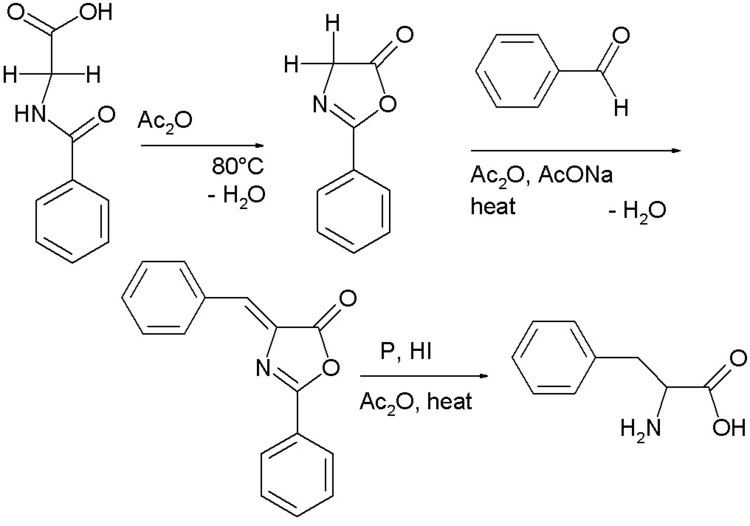 | ||
The Erlenmeyer–Plöchl azlactone and amino acid synthesis, named after Friedrich Gustav Carl Emil Erlenmeyer who partly discovered the reaction, is a series of chemical reactions which transform glycine to various other amino acids via an oxazolone and an azlactone.
Contents
Hippuric acid cyclizes in the presence of acetic anhydride, condensing to give 2-phenyl-oxazolone. This intermediate also has two acidic protons and reacts with benzaldehyde, acetic anhydride and sodium acetate to a so-called azlactone. This compound on reduction gives access to phenylalanine.
Variations
Variants of the azlactone synthesis in which analogues of azlactones are used are sometimes advantageous. Hydantoin (in Bergmann modification), thiohydantoin and rhodanine have each been employed as the enolate-forming component of the condensation.
Scope
In one study the Erlenmeyer amino acid synthesis was used in the heart of an L-m-tyrosine synthesis
